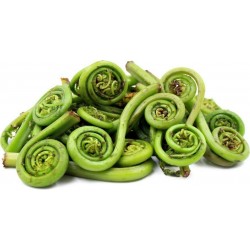Menu
-
MenuНазад
- Home
-
Категории
-
-
Категории
-
Растительные Семена
-
Сорта по стране
- Сорта из Армении
- Сорта из БиГ
- Сорта из Хорватии
- Сорта из Франции
- Сорта из Германии
- Сорта из Греции
- Сорта из Венгрии
- Сорта из Индии
- Сорта из Италии
- Сорта из Японии
- Сорта из Северной Македонии
- Сорта из Перу
- Сорта из россии
- Сорта из Сербии
- Сорта из Словении
- Сорта из Испании
- Сорта из Тайланда
- Сорта из Турции
- Сорта из США
- Семена томатов
- Семена кукурузы
- Семья тыквы
- Бобовая семья
- Семена огурца
- Семена перца
- Морковная семья
- Луковая семья
- Семена салата
- Картофельная семья
- Капустная семья
- Семена редьки
- Семья свеклы
- Семена Aрбуза
- Семена Дыни
- Цветная капуста Семена
- Подсолнечное семейство
-
Сорта по стране
- Фруктовые Семена
- Семена Перец Чили - Habanero
- Лекарственные травы Семена
- Вьющиеся растения семена
- Деревья Бонсай Семена
- Пальмовые семена
- Семена декоративных трав
- Семена табака
-
Растительные Семена
-
-
-
-
- НОВЫЕ ПРОДУКТЫ
- Доставка - Оплата
- Регистрация
- FAQ
Последние отзывы к продукту
These peppers came all the way from eastern Europe and took a while at no f...
От
 Fitim Berani на 21/09/2023
Fitim Berani на 21/09/2023
Проверенная покупка
Last customers
- Tanja, Beograd, Serbia
- Alaa, Alwajh, Saudi Arabia
- ionescu, valu lui traian, Romania
- Lasse, 2900, Norway
- Pete, Cleves, United States
- Stef, Waalwijk, Netherlands
- Sonia, Minervino di Lecce, Italy
- Adrian, Ingolstadt, Germany
- CORINNE, NOTRE DAME DE LONDRES, France
- Dušan, KRAVANY NAD DUNAJOM, Slovakia
- Arno, Ehrenkirchen, Germany
- Costas, LARNACA , Cyprus
- Fulvio francesco, Santa Domenica Talao, Italy
- william, Dun, France
- Aymeric , Saint tricat, France
- Ricard, Sant Celoni, Spain
- Maureen , Enniscorthy Co Wexford , Ireland
- Paul, St. Vigil in Enneberg (BZ), Italy
- Ricardo jorge , Viseu , Portugal
- Radosav, Kragujevac, Serbia
- Sylvie, Neyruz, Switzerland
- Julien, Scionzier, France
- Zoran, Vinca, Serbia
- Josef, Hochdorf-Assenheim, Germany
- Davide, London, United Kingdom
- Kimberly, Victoria, Gozo, Malta
- Saša , Beograd, Serbia
- Ewa, Galway, Ireland
- Ioannis , Kato Achaia, Greece
- Samuele, Milano, Italy
Товаров: 36.
Показано 13-24 из 36
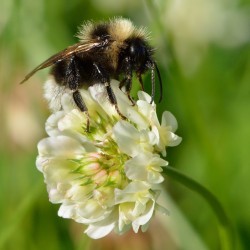
Семена Клевер бе́лый...
Цена
1,60 €
SKU: VE 174 (5g)
Seeds Gallery Com,
5/
5
<h2><strong>Семена Клевер бе́лый (Trifolium repens)</strong></h2>
<h2><span style="color: #ff0000;"><strong>Цена за упаковку 7000 (5 г) семян.</strong></span></h2>
<p style="color: #202122; font-size: 14px;"><b>Кле́вер ползу́чий</b>, или<span> </span><b>Клевер бе́лый</b><sup id="cite_ref-2" class="reference" style="font-size: 11.2px;"></sup>, или<span> </span><b>Клевер голла́ндский</b>, или<span> </span><b>Ка́шка бе́лая</b>, или<span> </span><b>Амория ползу́чая</b><span> </span>(лат. <span lang="la">Trifolium repens</span>) — растение из рода<span> </span>Клевер<span> </span>подсемейства<span> </span>Мотыльковые<span> </span>семейства<span> </span>Бобовые.</p>
<p>Клевер ползучий —<span> </span>многолетнее<span> </span>травянистое<span> </span>растение.</p>
<p>Корень<span> </span>стержневой, мелкоукореняющийся, сильноветвящийся, дополнительные корни образуются на узлах лежащего стебля. Развиваясь дополнительные корни создают самостоятельную корневую систему, обеспечивающую существование растения и после отмирания главного корня.</p>
<p>Стебель<span> </span>ползучий, стелющийся, ветвистый, голый, часто полый.</p>
<p>Листья<span> </span>длинно-черешчатые, трёхраздельные, их<span> </span>листочки<span> </span>широкояйцевидные, на верхушке выемчатые.<span> </span>Черешки<span> </span>восходящие, до 30 см длиной.</p>
<p>Соцветия<span> </span>головки<span> </span>пазушные, почти шаровидные, рыхлые, до 2 см в поперечнике;<span> </span>цветоносы<span> </span>длиннее черешков листьев, длиной 15—30 см, после отцветания отгибаются вниз, тогда как молодые или цветущие торчат вверх.<span> </span>Венчик<span> </span>белый или розоватый, по отцветании буреют; цветки слегка ароматные. В цветке 10 тычинок, девять из них сросшиеся нитями в трубочку, одна — свободная. Нектароносная ткань расположена на дне венчика вокруг завязи. Цветёт с мая до глубокой осени. Цветки в головке распускаются от периферии к центру.</p>
<p>Пыльцевые зёрна трёхбороздно-оровые, эллипсоидальной формы. Длина полярной оси 23,8—27,2 мкм, экваториальный диаметр 20,4—25,4 мкм. В очертании с полюса округло-треугольные, со слегка выпуклыми сторонами, с экватора — широкоэллиптические. Борозды шириной 3,5—5 мкм, длинные, с неровными краями, со слегка притуплёнными концами, нисходящимися у полюсов.<span> </span>Оры<span> </span>округлые, с ровными краями, наибольший диаметр 10 мкм. Мембрана борозд и ор зернистая. Ширина<span> </span>мезокольпиума<span> </span>18—21 мкм, диаметр<span> </span>апокольпиума<span> </span>5—8 мкм. Толщина<span> </span>экзины<span> </span>1,5 мкм. Текстура пятнистая.<span> </span>Пыльцевые зёрна<span> </span>жёлтого цвета.</p>
<p>Плод —<span> </span>боб<span> </span>продолговатый, плоский, содержит от трёх до четырёх почковидных или сердцевидных<span> </span>семян<span> </span>серо-жёлтого или оранжевого цвета. Начало созревания семян — июнь — июль.</p>
<p>Размножается<span> </span>как семенами, так и<span> </span>вегетативно.</p>
<h2 style="color: #000000; font-size: 1.5em;"><span id=".D0.A0.D0.B0.D1.81.D0.BF.D1.80.D0.BE.D1.81.D1.82.D1.80.D0.B0.D0.BD.D0.B5.D0.BD.D0.B8.D0.B5_.D0.B8_.D1.8D.D0.BA.D0.BE.D0.BB.D0.BE.D0.B3.D0.B8.D1.8F"></span><span class="mw-headline" id="Распространение_и_экология">Распространение и экология</span></h2>
<p>Распространён в зоне<span> </span>умеренного климата — в<span> </span>Северной Африке,<span> </span>Малой,<span> </span>Передней<span> </span>и<span> </span>Средней Азии,<span> </span>Пакистане, практически повсюду в<span> </span>Европе<span> </span>и<span> </span>Закавказье.</p>
<p>Широко натурализовался на юге<span> </span>Африки, в<span> </span>тропических<span> </span>районах<span> </span>Азии, в<span> </span>Австралии<span> </span>и<span> </span>Новой Зеландии, в<span> </span>Северной<span> </span>и<span> </span>Южной Америке.</p>
<p>В<span> </span>России<span> </span>встречается в<span> </span>Европейской части, на<span> </span>Кавказе, в<span> </span>Западной<span> </span>и<span> </span>Восточной Сибири, на<span> </span>Дальнем Востоке<span> </span>и<span> </span>Камчатке.</p>
<p>Растёт по полям и<span> </span>лугам, берегам<span> </span>водоёмов<span> </span>и обочинам дорог, на<span> </span>пастбищах<span> </span>и возле жилья. Часто<span> </span>сорничает<span> </span>в посевах. К<span> </span>почвам<span> </span>нетребователен. Влаго- и<span> </span>светолюбив. Морозостоек. Имеет от трёх до шести пластинок листьев, рекорд — 21, иногда в одном скоплении почти нет трёхлистных.</p>
<h2 style="color: #000000; font-size: 1.5em;"><span id=".D0.97.D0.BD.D0.B0.D1.87.D0.B5.D0.BD.D0.B8.D0.B5_.D0.B8_.D0.BF.D1.80.D0.B8.D0.BC.D0.B5.D0.BD.D0.B5.D0.BD.D0.B8.D0.B5"></span><span class="mw-headline" id="Значение_и_применение">Значение и применение</span></h2>
<h3 style="color: #000000; font-size: 1.2em;"><span id=".D0.A6.D0.B5.D0.BD.D0.BD.D1.8B.D0.B9_.D0.BC.D0.B5.D0.B4.D0.BE.D0.BD.D0.BE.D1.81"></span><span class="mw-headline" id="Ценный_медонос">Ценный медонос</span></h3>
<p>Выделяет нектар только на достаточно увлажненных местах<sup id="cite_ref-_cd526bd7ffeb6264_3-1" class="reference" style="font-size: 11.2px;"></sup>. Наиболее благоприятная погода от 24 до 30° С. Пчёлы отлично посещают это растение, собирая с него много<span> </span>мёда<span> </span>и<span> </span>пыльцы<span> </span>желтого цвета. Продуктивность мёда при сплошном произрастании достигает 100 кг/га<sup id="cite_ref-_92fe4c5fad844e0c_4-0" class="reference" style="font-size: 11.2px;">[4]</sup>. В Приморье 200 кг, в Сибири 60 кг/га. В отдельные годы на<span> </span>Дальнем востоке<span> </span>и в<span> </span>Западной Сибири<span> </span>медосбор с клевера ползучего достигает 25—30 кг на пчелиную семью. Теплым летом взяток достигает 3,5 кг в день<sup id="cite_ref-_95ca38044bbfdd40_5-0" class="reference" style="font-size: 11.2px;">[5]</sup>. Сто цветков выделяют 34 мг бледно-жёлтой пыльцы, а продуктивность соцветия 19,38 —29,24 мг<sup id="cite_ref-_28d3bfe63b8711fc_6-0" class="reference" style="font-size: 11.2px;"></sup>.</p>
<h3 style="color: #000000; font-size: 1.2em;"><span id=".D0.9F.D1.80.D0.BE.D1.87.D0.B5.D0.B5"></span><span class="mw-headline" id="Прочее">Прочее</span></h3>
<p>Прекрасное<span> </span>кормовое<span> </span>пастбищное растение. Охотно поедается всяким<span> </span>скотом. Устойчиво к вытаптыванию и<span> </span>стравливанию, быстро отрастает.</p>
<p>Почвоулучшающее растение.</p>
<p>В смеси со<span> </span>злаками<span> </span>часто высевается на культурных пастбищах.</p>
<script src="//cdn.public.n1ed.com/G3OMDFLT/widgets.js"></script>
VE 174 (5g)

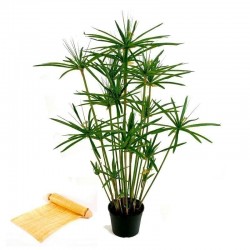
Papyrus Sedge, Paper Reed...
Цена
2,35 €
SKU: MHS 10
Seeds Gallery Com,
5/
5
<!DOCTYPE html>
<html>
<head>
<meta http-equiv="Content-Type" content="text/html; charset=UTF-8" />
</head>
<body>
<h2><strong><em><span style="text-decoration: underline;">Papyrus Sedge, Paper Reed Seeds (Cyperus papyrus)</span></em></strong></h2>
<h3><span style="color: #ff0000;"><strong>Price for Package of 10 seeds. </strong></span></h3>
<p>Cyperus papyrus (papyrus sedge, paper reed, Indian matting plant, Nile grass) is a species of aquatic flowering plant belonging to the sedge family Cyperaceae. It is a tender herbaceous perennial, native to Africa, and forms tall stands of reed-like swamp vegetation in shallow water.</p>
<p>Papyrus sedge (and its close relatives) has a very long history of use by humans, notably by the Ancient Egyptians—it is the source of papyrus paper, one of the first types of paper ever made. Parts of the plant can be eaten, and the highly buoyant stems can be made into boats. It is now often cultivated as an ornamental plant.</p>
<p>In nature, it grows in full sun, in flooded swamps, and on lake margins throughout Africa, Madagascar, and the Mediterranean countries.</p>
<p>C. papyrus and the dwarf cultivar C. papyrus 'Nanus'[3] have gained the Royal Horticultural Society's Award of Garden Merit.</p>
<p>This tall, robust, leafless aquatic plant can grow 4 to 5 m (13 to 16 ft) high. It forms a grass-like clump of triangular green stems that rise up from thick, woody rhizomes. Each stem is topped by a dense cluster of thin, bright green, thread-like stems around 10 to 30 cm (4 to 10 in) in length, resembling a feather duster when the plant is young. Greenish-brown flower clusters eventually appear at the ends of the rays, giving way to brown, nut-like fruits.</p>
<p>The younger parts of the rhizome are covered by red-brown, papery, triangular scales, which also cover the base of the culms. Botanically, these represent reduced leaves, so strictly it is not quite correct to call this plant fully "leafless".</p>
<p><strong>Cultivation</strong></p>
<p>The papyrus plant is relatively easy to grow from seed, though in Egypt, it is more common to split the rootstock, and grows quite fast once established.</p>
<p><strong>Uses</strong></p>
<p>In Ancient Egypt, papyrus was used for various of purposes such as baskets, sandals, blankets, medicine, incense, and boats. The woody root was used to create bowls and different utensils, and was also burned for fuel. Egyptians made efficient use of the entire plant. Papyrus was an important, "Gift of the Nile" which is still preserved and perpetuated in the Egyptian culture.</p>
<p><strong>Papyrus in history</strong></p>
<p>Egyptians used the plant (which they called aaru) for many purposes, most famously for making papyrus. Its name in Greek and in English is widely believed to have come from Egyptian. Cyperus papyrus is now used mainly for decoration, as it is nearly extinct in its native habitat in the Nile Delta, where in ancient times it was widely cultivated. Theophrastus' History of Plants (Book iv. 10) states that it grew in Syria, and according to Pliny's Natural History, it was also a native plant of the Niger River and the Euphrates.</p>
<p>Aside from papyrus, several other members of the genus Cyperus may also have been involved in the multiple uses Egyptians found for the plant. Its flowering heads were linked to make garlands for the gods in gratitude. The pith of young shoots was eaten both cooked and raw. Its woody root made bowls and other utensils and was burned for fuel. From the stems were made reed boats (seen in bas-reliefs of the Fourth Dynasty showing men cutting papyrus to build a boat; similar boats are still made in southern Sudan), sails, mats, cloth, cordage, and sandals. Theophrastus states that King Antigonus made the rigging of his fleet of papyrus, an old practice illustrated by the ship's cable, wherewith the doors were fastened when Odysseus slew the suitors in his hall (Odyssey xxi. 390).</p>
<p>The "rush" or "reed" basket in which the Biblical figure Moses was abandoned may have been made from papyrus.</p>
<p>The adventurer Thor Heyerdahl built two boats from papyrus, Ra and Ra II, in an attempt to demonstrate that ancient African or Mediterranean people could have reached America. He succeeded in sailing Ra II from Morocco to Barbados. Fishermen in the Okavango Delta use small sections of the stem as floats for their nets.</p>
<p><strong>Ecology</strong></p>
<p>Papyrus can be found in tropical rain forests,[where?] tolerating annual temperatures of 20 to 30 °C (68 to 86 °F) and a pH of 6.0 to 8.5. Papyrus flowers in late summer, and prefers full sun to partly shady conditions. Like most tropical plants, it is sensitive to frost. In the United States, it has become invasive in Florida and has escaped from cultivation in Louisiana, California, and Hawaii.</p>
<p>Papyrus sedge forms vast stands in swamps, shallow lakes, and along stream banks throughout the wetter parts of Africa, but it has become rare in the Nile Delta. In deeper waters, it is the chief constituent of the floating, tangled masses of vegetation known as sudd. It also occurs in Madagascar, and some Mediterranean areas such as Sicily and the Levant.</p>
<p>The "feather-duster" flowering heads make ideal nesting sites for many social species of birds. As in most sedges, pollination is by wind, not insects, and the mature fruits after release are distributed by water.</p>
<p>Papyrus is a C4 sedge that forms highly productive monotypic stands over large areas of wetland in Africa.</p>
<h2 style="text-align: center;"><span style="color: #fd0000;"><strong>ATTENTION !!! </strong></span></h2>
<h2 style="text-align: center;"><span style="color: #fd0000;"><strong>SEEDS ARE VERY SMALL, UNPACKING AT THE WHITE PAPER !!!</strong></span></h2>
<p></p>
</body>
</html>
MHS 10 (10 S)

- Только онлайн

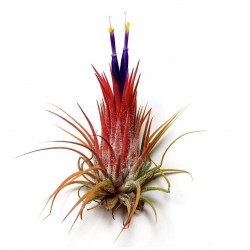
Tillandsia Ionantha...
Цена
2,95 €
SKU: UT 13
Seeds Gallery Com,
5/
5
<h2><span style="font-size:14pt;"><strong>Tillandsia Ionantha Airplant Seeds</strong></span></h2>
<h2><span style="color:#fb0101;font-size:14pt;"><strong>Price for Package of 5 seeds.</strong></span></h2>
<p><span>The Tillandsia Ionantha red is a very exclusive product. The Ionantha kind, in general, is one of the most common species within the epiphyte family of Tillandsia. Because of its small and compact form, it is very easy to use in flower arrangements and bouquets. Moreover, the Ionantha red is highly decorative and beautiful to combine and use for decoration purposes. The Tillandsia Ionantha red requires also very little care compared to other Tillandsia species, which makes it a great and easy-care product to have and work with.</span></p>
<p><span>This particular species is native to Central and South America and mostly lives in desert-like climates. There are many types of Tillandsia Ionantha, for example: Ionantha Fuego (fire), Ionantha Scaposa, Ionantha Rubra and Ionantha Ionantha (which can be found in red color in the picture). Corsa Plant / we mainly have the Tillandsia Ionantha Ionantha in green and red color available with a height of about 8-10 centimeters! Also, the Tillandsia Ionantha Scaposa is currently available at Corsa Plant!</span></p>
<h2><span>AIR PLANT CARE - HOW TO CARE FOR TILLANDSIA</span></h2>
<p><span>Tillandsias grow differently than most other house plants, so they can be confusing to the beginner. They are really very hardy, and require much less attention than other house plants. The following simplifies the instruction but you can scroll down for much more specific information.</span></p>
<p><span>Provided the atmosphere is not too dry they can survive with water misting and the occasional bath.</span></p>
<p><span>Give them bright, filtered light</span></p>
<p><span>Protect them from frosts.</span></p>
<p><span>If you are growing them indoors and the air is dry, you will need (at minimum) to submerge the plant in water for 2-3 hours about every two weeks.</span></p>
<p><span>In a shaded-house or unheated home, you can use a soaking mist once or twice a week in summer, once a month in cooler weather.</span></p>
<p><span>You can fertilize by adding a pinch of Bromeliad or Orchid fertilizer to your mister.</span></p>
<h2><span>AIR PLANTS IN GLASS GLOBES</span></h2>
<p><span>Air plants in glass globes have become so popular that I get calls all the time about caring for them. Follow these simple instruction to enjoy your glass surrounded plant for many years. If you are looking for glass globes, find many unique designs in our shop.</span></p>
<p><span>The larger the globe the more care you can give your plant.</span></p>
<p><span>Water your plant when you first receive it by soaking 20-30 minutes. Take note of the size and color and you should see how happy the plant is. Keep this "picture" in your mind.</span></p>
<p><span>Allow your plant to dry almost completely before placing in the globe.</span></p>
<p><span>Mist your plant every 4-5 days with one spray for tiny globes, 2-3 sprays for globes 3-5 inches, more if the plant is in a large open globe. The key is to judge the drying time, the smaller the globe, the less circulation, the longer the plant will hold the moisture. If you over water the plant will die.</span></p>
<p><span>Remember what your plant looked like after soaking? If it has lost that happy healthy look, take it out and soak it for 30 minutes to an hour, shake, allow to almost completely dry and replace in globe.</span></p>
<p><span>Do not place your globes directly in front of a window where they get direct sun. Remember the glass will intensify the sunlight and the heat. Indirect light is best and some will even grow in low to moderate light.</span></p>
<p><span>Favorite Plants for Globes: Ionantha Guatemala, Ionantha Rubra, Ionantha Scaposa, Ionantha Mexican, Ionantha Fuego, Funkiana, Argentea, Bulbosa Guatemala and Butzii.</span></p>
<p><span>The following care instructions are more specific, so feel free to really dive-in! I have added things over the last year as I have learned.</span></p>
<p><strong><span>LIGHT</span></strong></p>
<p><span>Bright filtered light is the general rule, and the higher the humidity of the air the higher light will be tolerated. Outdoors the silvery-leafed varieties (ex: Xerographica, Harissii) can usually be grown in full sun, but in an un-shaded greenhouse or close to un-shaded glass in a sunny room or conservatory the same plant will quickly burn because the air dries out like an oven. In a very sunny spot indoors they may need daily misting or weekly soaking depending on which method you prefer. For more information, read our detailed post about the effects of Summer Sun on your air plants.</span></p>
<p><strong>ARTIFICIAL LIGHT</strong></p>
<p><span>Full spectrum artificial light (fluorescent) is best. Plant should be no further than 36" from the fluorescent tubes and can be as close as 6". A four-tube 48" fixture works well. Bulbs can be any full spectrum type Gro-Lux, Repta-Sun, Vita-Lite, etc. Light should be set with a timer, 12 hours per day.</span></p>
<h2><span>WATERING YOUR AIR PLANTS</span></h2>
<p><span>Thoroughly wet your Tillandsia 2-3 times per week; more often in a hot, dry environment; less often in a cool, humid one. In conditions of extreme drying, and consequent moisture loss, Tillandsia cannot get replacement water from their roots like a terrestrial plant, or draw on internal reserves like a succulent.</span></p>
<p><strong><span>TYPE OF WATER</span></strong></p>
<p><span>The Water you use is important. Never use distilled water! Softened Water is a not good either because of the salt content. Filtered water, tap water that has sat long enough for the chlorine to dissipate, and bottled water are all fine. Pond Water and aquarium water works well as long as they aren't over crowded with fish and/or reptiles.</span></p>
<p><span>Outdoors you may never need to water Tillandsias if you live in humid Southeast or Florida. Indoors, the hotter and drier the air, the more you need to water. Plants should be given enough light and air circulation to dry in no longer than 3 hours after watering. Wind can be a detriment as the plant dries too quickly. Remember that inside with a window fan as well. If the plant dries within a very short period of time, it is not hydrating at all. Spray misting is insufficient as the sole means of watering but may be beneficial between regular waterings in dry climates to increase the humidity.</span></p>
<p><span>If the plant is in a shell, be sure to empty the water out. Tillandsias will not survive in standing water. Under-watering is evidenced by an exaggerating of the natural concave curve of each leaf. After wetting your plants thoroughly, turn them upside down and gently shake them. I have found that the water that collects near the base is detrimental if left to long. I have lost many plants that way while learning. One last thing about watering your air plant - It is much better to water in the morning than at night. Air plants absorb the Carbon Dioxide from the air at night instead of the day time. If the plant is wet, it does not breath therefore, unless it can dry quickly at night, plan on morning baths.</span></p>
<p><strong><span>AIR CIRCULATION</span></strong></p>
<p><span>Following each watering, Tillandsias should be given enough light and air circulation to dry in 4 hours or less. Do not keep plants constantly wet or moist. Do not allow them to dry too quickly though. 1-3 hours is optimum. Also if the air is hot, a breeze acts to cool the plant and keep it from becoming overheated. Air circulation is important.</span></p>
<p><strong><span>TEMPERATURE</span></strong></p>
<p><span>Optimum temperature range for Tillandsias is 50 - 90 degrees F. I have kept my plants outside during 40 degree F. weather but only for a night or two knowing it would be warm during the day. Most tillandsia will die with frost. Learn here how to acclimate your plants to the outdoors after their indoor winter holiday.</span></p>
<p><strong><span>FERTILIZER</span></strong></p>
<p><span>Use Bromeliad fertilizer (17-8-22) twice a month. It is great for blooming and reproduction! We offer our specially tested Air Plant Fertilizer right on our website. Other water-soluble fertilizers can be used at 1/4 strength (Rapid Grow, Miracle-Grow, etc.) if Bromeliad fertilizer is not available. Note Here: If you use pond water or aquarium water, Don't use fertilizer. Soaking the plants in these waters is a natural fertilizer and can help revive plants that are in distress.</span></p>
<p><strong><span>GROWTH CYCLE</span></strong></p>
<p><span>Bromeliad Tillandsia have a life cycle of one plant growing to maturity and blooming. Before, during or after blooming (depending on the species) your plant will start producing offsets (Pups), most plants will produce between 2 - 8 pups. Each plant will flower once in its lifetime, remember that each pup is a plant and it will bloom. Flowers can last from several days to many months, depending on the species, and different species bloom at different times depending also on its care and environment. You can expect blooms from mid winter through mid summer depending on the plant.</span></p>
<p><span>If you leave your plant to clump just remove the leaves of the mother plant as she starts to dry up, just pull the leaves out with a gentle sideways tug, if the leaf resists, its not dead yet, so just trim any dried areas instead. Once you've fully removed the mother plant, the gap that's left will quickly be filled in by the other plants growing & spreading.</span></p>
<h2><span>REMOVING AIR PLANT PUPS</span></h2>
<p><span>To remove the pups, they should be at least 1/3 to 1/2 the size of the mother plant. Hold both mother and pup at their bases and gently twist in a downward motion. If this does not happen easily, you may need to remove the pup by cutting downward as close to the mother as possible. Do not discard the mother plant yet, as long as she is still alive she will continue to produce more pups for you. Often taking several years after blooming before she finally dies.</span></p>
<h2><span>MOUNTING YOUR TILLANDSIA</span></h2>
<p><span>Tillandsias can be grown basically anywhere, on rocks, in a seashell or on coral, in ceramic or pottery, attached to wood (not pressure treated wood this is impregnated with copper, and copper will kill your plant). When considering what you are going to do with your plant don't forget that you have to be able to water it and it has to be placed somewhere that it will get sufficient light.</span></p>
<p><span>Try not to put Tillandsias in containers that hold water, they need to dry out. If you do place your plant in something that holds water, empty out the excess after watering your plant. The same thing applies when mounting your plant. Do not surround your plant with Moss. It will hold too much water and will rot your plant.</span></p>
<h2><span>ATTACHING YOUR AIR PLANT</span></h2>
<p><span>You can use glue, wire, fishing line, twisty ties, nails or staples. Nails and staples can only be used on plants with a woody stolon or with sufficient roots. DO NOT staple your plant on its fleshy parts as it will kill it. Try to use a waterproof glue such as Liquid Nails, E6000, or hot glue, allowing the glue to cool for 5 seconds. Do not not use superglue or copper wire as these will kill your plant.</span></p>
<h2><span>CARING FOR YOUR NEW PLANTS AFTER SHIPPING</span></h2>
<p><span>When you receive our plants, please remove from the shipping package and soak for 30 minutes to 1 hour, submerge upside down. Shake gently to remove excess water, Place in bright light and allow to dry. Do not fertilize plants for 3 weeks following their arrival but be sure to follow directions for light and water.</span></p>
UT 13

- Только онлайн

Ирландский мох, мшанка семена
Цена
1,95 €
SKU: MHS 101 CC
Seeds Gallery Com,
5/
5
<!DOCTYPE html>
<html>
<head>
<meta http-equiv="Content-Type" content="text/html; charset=UTF-8" />
</head>
<body>
<h2><strong>Ирландский мох, мшанка семена (Chondrus Crispus)</strong></h2>
<h2><strong><span style="color: #ff0000;">Цена за пакет из 10 семян.</span></strong></h2>
<p>Изысканные коврики мшанки – сами по себе являются самодостаточным газоном. Выращивание этого растения помогает заполнить пустоты сада и добавить яркие акценты в его дизайн.</p>
<p>Ирландский мох, или мшанка, – почвопокровное растение семейства Гвоздичные, являет собой нечто среднее между мхом и травой. Вырастает до 10 см в высоту, имеет характерные мелкие листья копьеобразной формы.</p>
<p>Мшанка цветет крошечными белыми цветками, которые на протяжении всего лета украшают мелкие стебельки. Мох мшанки отличается ярко-зеленым цветом, который при высокой температуре и сухости воздуха становится коричневым. Однако при достаточном количестве влаги и оптимальной температуре он снова радует насыщенным зеленым оттенком.</p>
<p>Для выращивания мшанки отлично подойдет солнечный или частично затененный участок. Тяжелые по механическому составу почвы требуют внесения песка. Почва, подготовленная под мох, должна быть плодородной, с хорошим дренажем. Идеально подходят супеси и хорошо компостированные почвы.<br />Подготовка участка. Перед посадкой мха необходимо удалить все растения, старую траву и обработать почву: разрыхлить ее на глубину 8-10 см и выровнять.<br />Полив участка. Газон из мшанки нуждается в регулярном поливе, при этом корни растения не должны быть сильно увлажнены.</p>
<h2><strong>Посев мшанки</strong></h2>
<p>Высевать семена мшанки надо в начале весны на расстоянии около 8-12 см друг от друга и присыпать их очень тонким слоем песка. Кроме этого газон можно засадить крошечными саженцами. Для их подготовки мох надо посеять еще зимой в помещении (в контейнеры, поставленные в воду). Для экономного использования посевного материала можно посев проводить с помощью шприца.</p>
<p>Мшанка прорастет в течение 2 или 3 недель при температуре 18-22°С. Почву все это время следует сохранять слегка влажной, но не мокрой. Посеянные семена покрывать не стоит, ведь для прорастания им нужен свет, поэтому их просто затеняют. После прорастания мох переносят в более прохладное место с температурой 13-15°C. Проросшую мшанку пересаживают в открытый грунт небольшими пучками-дернинками. Фрагменты мха просто вдавливаются во влажный грунт.</p>
<h2><strong>Уход</strong></h2>
<p>Сразу после высадки участок в течение двух недель поливают ежедневно, для лучшего укоренения мха его можно покрыть. В дальнейшем достаточно 1-2 поливов в неделю.<br />Раз в месяц мшанку надо подкормить водорастворимыми комплексными удобрениями в соотношении 6:4:4.<br />Растение может достичь от 2,5 до 10 см в высоту и при использовании в качестве газонной травы не нуждается в скашивании. В старых посадках необходимо вырезать потемневшие части. По мере развития мшанка создает неровную, волнистую поверхность. Многие цветоводы предпочитают оставлять его в таком виде, но если покров становится слишком шероховатым, его прореживают, а на освободившиеся участки подсыпают тонкий слой плодородной почвы.<br />С наступлением холодов мшанку перестают поливать, чтобы не допустить промерзания корней. В целом, мшанка зимостойкое растение, но бесснежной зимой может вымерзнуть. В районах с суровыми зимами газон лучше укрывать.<br />Ирландский мох – отличная альтернатива газонной траве. Он не «боится» вытаптывания, быстро привыкает к новым условиям и хорошо растет в любой местности. Если по какой-то причине кусочек ковра их мха испортиться, не стоит переживать – через некоторое время он обновится самостоятельно. Хотите удивлять ухоженным газоном каждый год своих знакомых и соседей? Тогда смело высаживайте мшанку на своем участке.</p>
</body>
</html>
MHS 101 CC

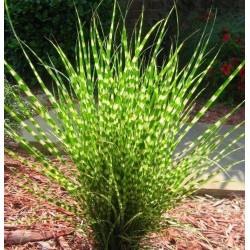
Zebra Grass Seeds...
Цена
1,55 €
SKU: UT 14
Seeds Gallery Com,
5/
5
<h3><span style="font-size:14pt;"><strong>Zebra Grass Seeds (Miscanthus sinensis Zebrinus) </strong></span></h3>
<h3><span style="color:#d0121a;font-size:14pt;"><strong>Price for Package of 10 seeds.</strong></span></h3>
<p><strong>Culture</strong></p>
<p>Easily grown in average, medium moisture, well-drained soil in full sun to part shade. Tolerant of a wide range of soils from well-drained sandy soils to the heavy clays present in much of the St. Louis area. Prefers moist soils. Best in full sun. Less vigorous with decreased flowering and tendency to flop in too much shade. Tolerant of summer heat and humidity. Clumps slowly expand in circumference by short rhizomes, but typically retain tight clump shape. Foliage should be left standing throughout the winter for visual interest and crown protection. Cut foliage close to the ground in late winter just before new shoots appear. Propagate by division of the crown. This grass will reseed to the point of being somewhat invasive in the milder parts of its growing range. Mulch helps prevent reseeding.</p>
<p><strong>Noteworthy Characteristics</strong></p>
<p>Miscanthus sinensis, commonly known as Chinese silver grass, Japanese silver grass or eulalia grass, is a clump-forming warm season grass that typically grows to 3-7’ tall. It is native to lowlands and lower alpine areas in Japan, Korea and China. It has escaped gardens and naturalized in over 25 states in the Central and Eastern U.S. east of the Mississippi River plus in several western States including Colorado and California.</p>
<p>This grass features a dense clump of upward-arching stems and leaves which give it a rounded, fountain-like appearance. Linear leaves (to 3-4’ long and 3/8” wide) have tapered tips, serrate margins and whitish to silvery midribs. Foliage often turns attractive shades of yellow to orange by mid-fall before gradually fading to beige-tan for winter. Pink to red flowers in feathery, whisk-like, loose terminal panicles (8-10” long) bloom above the foliage from late August to October. Flower panicles gradually turn beige by mid-fall as the seeds mature. Flower panicles and foliage both retain good arching shape, beige color and ornamental interest throughout winter, with enhanced attractiveness often coming from a covering of new fallen snow.</p>
<p>Miscanthus sinensis will spread somewhat invasively in the landscape, particularly in some of the milder areas of its growing range. It often initially spreads to disturbed sites such as roadsides, railroad right-of-ways or woodland margins. Invasive potential for the species is significant, but is of less concern for many of the numerous ornamental cultivars, some of which are sterile.</p>
<p>Genus name comes from the Greek words miskos meaning a stem and anthos meaning flower in reference to the stalked spikelets.</p>
<p>Specific epithet means Chinese.</p>
<p>This grass was once included in the genus Eulalia, but was subsequently reclassified to the genus Miscanthus with retention of its common name of Eulalia grass by many gardeners.</p>
<p>'Zebrinus', knows as zebra grass, is a clump-forming grass noted for its horizontally banded foliage which is reminiscent of both the popular M. s. 'Strictus' and M. s. 'Puenktchen'. However, 'Zebrinus' clumps are rounded, tend to flop and often need support, whereas 'Strictus' and 'Puenktchen' both feature spiky, upright leaf blades in narrower clumps which usually do not need staking. 'Zebrinus' typically forms a substantial foliage clump to 4-6' tall, however it sends up flower stalks to 2' above the foliage clump, thus bringing the total height of the grass to 6-8' tall when in flower. Features dark green leaves with zebra-striped, golden yellow bands extending horizontally across the leaves at irregular intervals. Foliage gradually fades to tan after frost. Tiny pink/copper-tinted flowers appear in tassel-like inflorescences above the foliage in late summer, gradually turning into silvery white plumes in fall. Flower plumes persist well into winter providing good winter interest.</p>
<p><strong>Problems</strong></p>
<p>No frequently occurring insect or disease problems. In some areas of the U.S., miscanthus mealybug and miscanthus blight are becoming significant problems. Miscanthus mealybug causes stunted growth and is difficult to eradicate because it lives inside the stems. Miscanthus blight is a fungal disease which attacks the blades and sheaths. Leaf rust may occur.</p>
<p>'Zebrinus' clumps may need staking and are susceptible to collapsing in winter from heavy snows.</p>
<p>Common Name: zebra grass, Maiden Grass Zebrinus, Eulalia Zebrinus, Chinese Silver Grass, Japanes Silver Grass, Zebra-Striped grass.</p>
<p>Type: Ornamental grass</p>
<p>Family: Poaceae</p>
<p>Zone: 5 to 9</p>
<p>Height: 5.00 to 8.00 feet</p>
<p>Spread: 4.00 to 6.00 feet</p>
<p>Bloom Time: August to February</p>
<p>Bloom Description: Pinkish white</p>
<p>Sun: Full sun to part shade</p>
<p>Water: Medium</p>
<p>Maintenance: Low</p>
<p>Flower: Showy</p>
<p>Leaf: Colorful</p>
<p>Other: Winter Interest</p>
<p>Tolerate: Drought, Erosion, Dry Soil, Black Walnut, Air Pollution</p>
UT 14

- Только онлайн
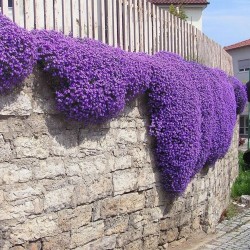
Тимья́н ползу́чий семена...
Цена
1,95 €
SKU: MHS 111
Seeds Gallery Com,
5/
5
<h2><strong>Тимья́н ползу́чий семена (Thýmus serpýllum)</strong></h2>
<h2><span style="color:#ff0000;"><strong>Цена за пакет из 50 семян.</strong></span></h2>
<p><b>Тимья́н ползу́чий</b>, или<span> </span><b>Тимьян густоволоси́стый</b>, или<span> </span><b>Чабре́ц ползу́чий</b>, или<span> </span><b>Чабрец густоволосистый</b><sup class="reference">[2]</sup><span> </span>(лат. <span lang="la" xml:lang="la">Thýmus serpýllum</span>) (от<span> </span>др.-греч.<span> </span><span lang="grc" xml:lang="grc"><span>Θύμος ἕρπυλλος</span></span>) —<span> </span>вид<span> </span>многолетних<span> </span>полукустарников<span> </span>из рода<span> </span>Тимьян<span> </span>(<i>Thymus</i>) семейства<span> </span>Яснотковые<span> </span>(<i><span lang="la" xml:lang="la">Lamiaceae</span></i>). Народное название растения — богоро́дская (богоро́дицкая) трава́ (иногда это название применяют и к другим видам тимьяна)<sup class="reference">[3]</sup>. Под словом «чабрец», используемым в качестве названия вида, понимается именно тимьян ползучий.</p>
<p>Широко используется как<span> </span>лекарственное растение, а также как<span> </span>пряность<span> </span>в кулинарии.</p>
<h2><span class="mw-headline">Распространение и экология</span></h2>
<p>Встречается в<span> </span>умеренном<span> </span>климате<span> </span>Евразии, от<span> </span>Скандинавии<span> </span>до<span> </span>Средиземноморья<span> </span>и от<span> </span>Британских островов<span> </span>до<span> </span>Восточной Сибири<sup id="cite_ref-GRIN_4-0" class="reference">[4]</sup>.</p>
<p>Обилен преимущественно в<span> </span>степной зоне. В лесной и полярно-арктической зонах встречается только на повышенных участках. Приурочен к скалам, каменистым и щебневым склонам, окраинам<span> </span>боров<sup class="reference">[5]</sup>.</p>
<p>Обычно произрастает на песчаных почвах.</p>
<h2><span class="mw-headline">Биологическое описание</span></h2>
<p>Многолетний<span> </span>полукустарник<span> </span>до 15 см высотой, заканчивающийся лежачим побегом; цветоносные стебли прямостоячие или приподнимающиеся. Образует дерновинки.</p>
<p>Листья<span> </span>эллиптические или продолговато-эллиптические, длиной 5—10 мм, шириной 1,5—3,5 мм, на коротком<span> </span>черешке, с<span> </span>желёзками, наполненными<span> </span>эфирными маслом. Края листьев, в отличие от<span> </span>тимьяна обыкновенного, не завёрнуты.</p>
<p>Соцветия<span> </span>головчатые, компактные.<span> </span>Чашечка<span> </span>узкоколокольчатая, длиной около 4 мм.<span> </span>Цветонос<span> </span>короче<span> </span>чашечки. Венчик и чашечка двугубые.<span> </span>Венчик<span> </span>розовато-лиловый, яркий, длиной 6—8 мм.</p>
<p>Плод — мелкий эллипсоидальный<span> </span>орешек, длиной около 0,6 мм.</p>
<p>Цветёт, в зависимости от среды обитания, с конца мая до конца августа. Плоды созревают в июле — сентябре.</p>
<h2><span></span><span class="mw-headline">Химический состав</span></h2>
<p>Надземная часть растения содержит<span> </span>эфирное масло,<span> </span>флавоноиды,<span> </span>тритерпеновую,<span> </span>тимуновую<span> </span>(0,05 %),<span> </span>урсоловую,<span> </span>олеаноловую,<span> </span>кофейную,<span> </span>хлорогеновую,<span> </span>хинную кислоты,<span> </span>горечи,<span> </span>смолы,<span> </span>дубильные вещества,<span> </span>сапонины.</p>
<p>Выход эфирного масла из свежей травы 0,1—0,5 %, из сухой — 0,8—1,2 %. Эфирное масло — жидкость с сильным приятным запахом, бесцветная или светло-жёлтая. Главной составной частью эфирного масла являются<span> </span>фенолы<span> </span>(34—42 %), из них до 40 %<span> </span>тимола, имеется также<span> </span>карвакрол,<span> </span>n-цимол,<span> </span>L-α-пинен,<span> </span>γ-терпинен,<span> </span>терпинеол,<span> </span>L-борнеол,<span> </span>кариофиллен,<span> </span>линалоол. По составу эфирное масло близко к эфирному маслу тимьяна обыкновенного, но содержание фенольной фракции, как и тимола, ниже<sup class="reference">[5]</sup>.</p>
<h2><span class="mw-headline">Значение и применение</span></h2>
<div class="thumb tright">
<div class="thumbinner"><img alt="Тимья́н ползу́чий семена (Thýmus serpýllum)" src="https://upload.wikimedia.org/wikipedia/commons/thumb/4/4b/Thymus_serp_1.jpg/220px-Thymus_serp_1.jpg" width="220" height="218" class="thumbimage" title="Тимья́н ползу́чий семена (Thýmus serpýllum)" /><div class="thumbcaption">
<div class="magnify"></div>
Цветки чабреца</div>
</div>
</div>
<p>Один из лучших<span> </span>медоносов, дающий пчёлам много<span> </span>нектара<sup id="cite_ref-6" class="reference">[6]</sup>, из которого получается необыкновенно душистый<span> </span>мёд.</p>
<p>Раньше его использовали как составную часть<span> </span>курений<span> </span>при<span> </span>богослужениях.</p>
<p>Тимьян используют в<span> </span>парфюмерии.</p>
<h3><span></span><span class="mw-headline">Применение в кулинарии</span></h3>
<p>Тимьян обладает приятным сильным ароматом и острым, сильно пряным, горьким вкусом. Является популярной пряностью, добавляемой к<span> </span>копчёностям, свинине и баранине, к паштетам, грибам, творогу, дичи и сырам. В небольшом количестве тимьян добавляется к жареной рыбе, к печени, потрохам и телятине.</p>
<p>Надземная часть растения до плодоношения используется при производстве напитков. Листья и молодые побеги тимьяна употребляют как салат, для засолки огурцов. Они служат для отдушки колбас, уксуса, коктейлей, чая. Для этих целей используют свежие и сухие листья.</p>
<h3><span></span><span class="mw-headline">Применение в медицине</span></h3>
<p>В научной медицине в качестве лекарственного сырья используется трава тимьяна ползучего (лат. <span lang="la" xml:lang="la">Herba Serpylli</span>), собранная в период цветения, обмолоченная и высушенная на открытом воздухе в тени или сушилках при температуре 35—40 °С. Срок хранения сырья 2 года. Применение такое же, как и травы тимьяна обыкновенного<sup class="reference">[5]</sup>.<span> </span>Настои,<span> </span>отвары<span> </span>и<span> </span>экстрактчабреца назначают при острых и хронических заболеваниях дыхательных путей,<span> </span>бронхиальной астме<span> </span>и<span> </span>туберкулёзе. Жидкий экстракт из листьев входит в состав препарата «Пертуссин», применяемого при<span> </span>бронхитах<span> </span>и<span> </span>коклюше. Тимьян ползучий обладает<span> </span>бактерицидным,<span> </span>успокоительным,<span> </span>болеутоляющим,<span> </span>ранозаживляющим<span> </span>и<span> </span>антигельминтным<span> </span>действием. Надземная часть растения входит в состав<span> </span>отхаркивающих сборов,<span> </span>вяжущего<span> </span>и<span> </span>жёлчегонного сборов<span> </span>и сбора для ванн при воспалении суставов.</p>
<p>В народной медицине чабрец применяют при<span> </span>невралгии, различных<span> </span>неврозах, как<span> </span>потогонное,<span> </span>мочегонное, противосудорожное, успокаивающее и<span> </span>противогипертоническое средство. Наружно используется в виде<span> </span>ванн,<span> </span>компрессов<span> </span>и примочек при болях в<span> </span>суставах<span> </span>и<span> </span>мышцах. В виде мазей и примочек тимьян использовали при<span> </span>ревматизме, как ранозаживляющее при<span> </span>кожных болезнях.<span> </span>Хакасы<span> </span>используют богородскую траву в обряде<span> </span>алас — окуривании помещений, домашнего скота и другого имущества дымом для дезинфекции и отпугивания дурных духов.</p>
MHS 111 (50 S)

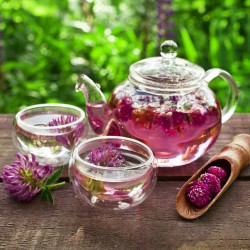
Семена съедобного Клевер...
Цена
1,95 €
SKU: MHS 134
Seeds Gallery Com,
5/
5
<!DOCTYPE html>
<html>
<head>
<meta http-equiv="Content-Type" content="text/html; charset=UTF-8" />
</head>
<body>
<h2><strong>Семена съедобного Клевер луговой (rifolium praténse)</strong></h2>
<h2><strong><span style="color: #ff0000;">Цена за пакет из 1000 семян.</span></strong></h2>
<p><b>Клевер лугово́й</b>, или<span> </span><b>клевер красный</b><sup id="cite_ref-2" class="reference">[2]</sup><span> </span>(лат. <span lang="la" xml:lang="la">Trifolium praténse</span>) — растение из<span> </span>рода<span> </span>Клевер<span> </span>(<i><span lang="la" xml:lang="la">Trifolium</span></i>), семейства<span> </span>Бобовые<span> </span>(<i><span lang="la" xml:lang="la">Fabaceae</span></i>), подсемейства<span> </span>Мотыльковые<span> </span>(<i><span lang="la" xml:lang="la">Faboideae</span></i>).</p>
<h2><span></span><span class="mw-headline">Распространение и экология</span></h2>
<p>Произрастает на всей территории<span> </span>Европы, в<span> </span>Северной Африке<span> </span>(Алжир,<span> </span>Марокко,<span> </span>Тунис),<span> </span>Западной<span> </span>и<span> </span>Средней Азии. На территории<span> </span>России<span> </span>встречается в<span> </span>европейской части,<span> </span>Сибири, на<span> </span>Дальнем Востоке<span> </span>и<span> </span>Камчатке.</p>
<p>Растёт на среднеувлажнённых<span> </span>лугах,<span> </span>лесных<span> </span>полянах, вдоль полей и дорог.</p>
<h2><span></span><span class="mw-headline">Ботаническое описание</span></h2>
<div class="thumb tleft">
<div class="thumbinner"><img alt="" src="https://upload.wikimedia.org/wikipedia/commons/thumb/5/59/Cleaned-Illustration_Trifolium_pratense.jpg/220px-Cleaned-Illustration_Trifolium_pratense.jpg" width="220" height="363" class="thumbimage" />
<div class="thumbcaption">
<div class="magnify"></div>
<span lang="la" xml:lang="la">Клевер луговой</span>.<span> </span><br />Ботаническая иллюстрация<span> </span>из книги<span> </span><span class="nowrap">О. В. Томе</span><span> </span><i>Flora von Deutschland, Österreich und der Schweiz</i>, 1885</div>
</div>
</div>
<p>Клевер луговой —<span> </span>двулетнее, но чаще<span> </span>многолетнее<span> </span>травянистое<span> </span>растение, достигает в высоту 15—55 см.</p>
<p>Ветвистые<span> </span>стебли<span> </span>приподнимающиеся.</p>
<p>Листья<span> </span>тройчатые, с широкояйцевидными мелкозубчатыми долями,<span> </span>листочки<span> </span>по краям цельные, с нежными ресничками по краям.</p>
<p>Соцветия<span> </span>головки<span> </span>рыхлые, шаровидные, сидят часто попарно и нередко прикрыты двумя верхними листьями.<span> </span>Венчиккрасный, изредка белый или неодноцветный;<span> </span>чашечка<span> </span>с десятью жилками.</p>
<p>Плод — яйцевидный, односемянный<span> </span>боб;<span> </span>семена<span> </span>то округлые, то угловатые, то желтовато-красные, то фиолетовые.</p>
<p>Цветёт в июне-сентябре. Плоды созревают в августе-октябре.</p>
<p>Размножается как семенами, так и<span> </span>вегетативно.</p>
<h2><span></span><span class="mw-headline">Химический состав</span></h2>
<p>В зелёной массе содержатся<span> </span>эфирное<span> </span>и<span> </span>жирные масла,<span> </span>дубильные вещества,<span> </span>гликозиды<span> </span>трифолин<span> </span>и<span> </span>изотрифолин,<span> </span>органические кислоты<span> </span>(<i>п</i>-кумаровая,<span> </span>салициловая,<span> </span>кетоглутаровая),<span> </span>ситостеролы,<span> </span>изофлавоны,<span> </span>смолы,<span> </span>витамины(аскорбиновая кислота,<span> </span>тиамин,<span> </span>рибофлавин,<span> </span>каротин,<span> </span>токоферол). В период цветения в надземной части содержится<span> </span>белок<span> </span>(20—25 %),<span> </span>жиры<span> </span>(2,5—3,5 %), каротин (до 0,01 %), аскорбиновая кислота (до 0,12 %), свободные<span> </span>аминокислоты<span> </span>(до 1,5 %),<span> </span>клетчатка<span> </span>(24-26 %), безазотистые экстрактивные вещества (более 40 %), соли<span> </span>кальция<span> </span>и<span> </span>фосфора. В траве и цветках найдены<span> </span>флавоны<span> </span>и<span> </span>флавонолы(кемпферол,<span> </span>кверцетин,<span> </span>пратолетин<span> </span>и др.),<span> </span>изофлавоны<span> </span>(генистеин,<span> </span>формононетин<span> </span>и др.).</p>
<p>В листьях содержится<span> </span>маакиаин —<span> </span>флавоноид<span> </span>из группы<span> </span>птерокарпанов, обладающий<span> </span>фунгицидными<span> </span>свойствами<sup id="cite_ref-_5a6061607cf015e0_3-0" class="reference">[3]</sup>.</p>
<p>В корнях после скашивания надземной части накапливается до 150 кг/га<span> </span>азота.</p>
<p>Содержание эфирного масла в цветках достигает 0,03 %, в его состав входят<span> </span>фурфурол<span> </span>и<span> </span>метиловокислый кумарин.</p>
<p>В семенах обнаружено до 12 % полувысыхающего жирного масла.</p>
<h2><span></span><span class="mw-headline">Значение и применение</span></h2>
<p>Из листьев получают витаминные концентраты. Эфирное масло применяют в ароматических композициях.</p>
<p>Из листьев готовят<span> </span>салаты, ими заправляют зелёные<span> </span>щи,<span> </span>ботвинью. Сухие растёртые листья в прошлом добавляли к муке при выпечке<span> </span>ржаного хлеба, а также использовали для приготовления<span> </span>соусов<span> </span>и при производстве<span> </span>сыров. На Кавказе молодые нераспустившиеся цветочные головки квасят как капусту и добавляют в зелёные салаты.</p>
<p>Является одной из наиболее ценных кормовых трав. 100 кг сена клевера лугового содержат 52,2<span> </span>кормовых единиц<span></span><sup class="noprint">[<i><span title="не указан источник на утверждение (2 февраля 2013)">источник не указан 2302 дня</span></i>]</sup>. По питательности сена он почти не уступает люцерне. Растение широко используется на зелёный корм, для заготовки сена,<span> </span>сенажа<span> </span>и<span> </span>силоса. После уборки семян<span> </span>солома<span> </span>идёт на корм. Накапливающийся в корнях азот остаётся в почве после запахивания, что способствует повышению плодородия полей. Широко культивируется как кормовое растение. Из корней выделено антигрибковое вещество —<span> </span>трифолиризин.</p>
<p>Ценный<span> </span>медонос, но<span> </span>нектар<span> </span>доступен только пчёлам с длинным<span> </span>хоботком, поэтому мёдопродуктивность составляет всего 6 кг мёда с гектара посевов<sup id="cite_ref-4" class="reference">[4]</sup>.<span> </span>Мёд<span> </span>относится к лучшим сортам, долго не засахаривается.</p>
<h2><span></span><span class="mw-headline">Болезни и вредители</span></h2>
<ul>
<li>Цветочная плесень — грибковое заболевание, поражающее различные виды клевера, наносит урон семеноводству.</li>
</ul>
<h2><span></span><span class="mw-headline">Классификация</span></h2>
<h3><span></span><span class="mw-headline">Таксономия</span></h3>
<p>Вид<span> </span><b>Клевер луговой</b><span> </span>входит в род<span> </span>Клевер<span> </span>(<i><span lang="la" xml:lang="la">Trifolium</span></i>)<span> </span>подсемейства<span> </span>Мотыльковые<span> </span>(<i><span lang="la" xml:lang="la">Faboideae</span></i>)<span> </span>семейства<span> </span>Бобовые<span> </span>(<i><span lang="la" xml:lang="la">Fabaceae</span></i>)<span> </span>порядка<span> </span>Бобовоцветные<span> </span>(<i><span lang="la" xml:lang="la">Fabales</span></i>).</p>
<p></p>
<table cellspacing="0" border="0">
<tbody>
<tr align="left">
<td colspan="7"> </td>
<td colspan="2" rowspan="2" align="center">ещё 5 семейств (согласно<span> </span>Системе APG II)</td>
<td colspan="4"> </td>
<td colspan="2" rowspan="2" align="center">ещё 4 рода (согласно<span> </span>Системе APG II)</td>
<td colspan="2"> </td>
</tr>
<tr align="left">
<td colspan="6"> </td>
<td rowspan="4"> </td>
<td colspan="3"> </td>
<td rowspan="4"> </td>
<td colspan="2"> </td>
</tr>
<tr align="left">
<td colspan="4"> </td>
<td bgcolor="#EFF9AB" rowspan="2" align="center">порядок<span> </span><b>Бобовоцветные</b></td>
<td> </td>
<td colspan="3"> </td>
<td bgcolor="#EFF9AB" rowspan="2" align="center">подсемейство<span> </span><b>Мотыльковые</b></td>
<td> </td>
<td colspan="3"> </td>
<td bgcolor="#EFF9AB" rowspan="2" align="center">вид<span> </span><span><b>Клевер луговой</b></span></td>
</tr>
<tr align="left">
<td colspan="3"> </td>
<td rowspan="4"> </td>
<td> </td>
<td colspan="2"> </td>
<td rowspan="4"> </td>
<td> </td>
<td colspan="2"> </td>
<td rowspan="4"> </td>
</tr>
<tr align="left">
<td> </td>
<td bgcolor="#EFF9AB" rowspan="2" align="center">отдел<span> </span>Цветковые, или Покрытосеменные</td>
<td> </td>
<td colspan="2"> </td>
<td bgcolor="#EFF9AB" rowspan="2" align="center">семейство<span> </span><b>Бобовые</b></td>
<td> </td>
<td colspan="2"> </td>
<td bgcolor="#EFF9AB" rowspan="2" align="center">род<span> </span><b>Клевер</b></td>
<td> </td>
<td> </td>
</tr>
<tr align="left">
<td> </td>
<td> </td>
<td colspan="3"> </td>
<td> </td>
<td colspan="3"> </td>
<td> </td>
<td> </td>
</tr>
<tr align="left">
<td colspan="3"> </td>
<td colspan="2" rowspan="2" align="center">ещё 44 порядка цветковых растений (согласно<span> </span>Системе APG II)</td>
<td colspan="3"> </td>
<td colspan="2" rowspan="2" align="center">ещё 2 подсемейства</td>
<td colspan="3"> </td>
<td rowspan="2" align="center">около 800 видов</td>
</tr>
<tr align="left">
<td colspan="4"> </td>
<td colspan="4"> </td>
<td colspan="4"> </td>
</tr>
</tbody>
</table>
<h3><span></span><span class="mw-headline">Разновидности</span></h3>
<p>Выделяют несколько разновидностей этого вида:</p>
<ul>
<li><span>Trifolium pratense</span><span> var. </span><span>americanum</span> <span>Harz</span></li>
<li><span>Trifolium pratense</span><span> var. </span><span>frigidum</span> <span>auct. non Gaudin</span></li>
<li><span>Trifolium pratense</span><span> var. </span><span>maritimum</span> <span>Zabel</span></li>
<li><span>Trifolium pratense</span><span> var. </span><span>parviflorum</span> <span>Bab.</span></li>
<li><span>Trifolium pratense</span><span> var. </span><span>perenne</span></li>
<li><span>Trifolium pratense</span><span> var. </span><span>pratense</span></li>
<li><span>Trifolium pratense</span><span> var. </span><span>sativum</span> <span>Schreb.</span></li>
<li><span>Trifolium pratense</span><span> var. </span><span>villosum</span></li>
</ul>
</body>
</html>
MHS 134 (3g)

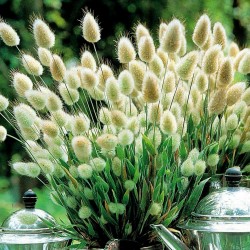
Зайцехво́ст семена (Lagurus...
Цена
1,65 €
SKU: UT 15
Seeds Gallery Com,
5/
5
<!DOCTYPE html>
<html>
<head>
<meta http-equiv="Content-Type" content="text/html; charset=UTF-8" />
</head>
<body>
<h2><strong>Зайцехво́ст семена (Lagurus ovatus)</strong></h2>
<h2><span style="color: #ff0000;"><strong>Цена за пакет из 10 семян.</strong></span></h2>
<p><b>Зайцехво́ст</b><span> </span>(лат. <span lang="la" xml:lang="la">Lagurus</span>, от<span> </span>др.-греч.<span> </span><span lang="grc" xml:lang="grc"><span>λᾰγο- +οὐρά</span></span>, «заячий хвост») —<span> </span>монотипный<span> </span>род однолетних растений<span> </span>семейства<span> </span>Злаки, состоящий из единственного вида —<span> </span>Зайцехвост яйцевидный<span> </span>(<i><span lang="la" xml:lang="la">Lagurus ovatus</span></i>).</p>
<h2><span></span><span class="mw-headline">Ботаническое описание</span></h2>
<p>Стебли 10—95 см, прямостоячие.</p>
<p>Метёлка<span> </span>0,6—4,5 (7) × 0,6—1,5 (2) см, яйцевидная, реже почти цилиндрическая, пушистая.<span> </span>Колоски<span> </span>7—11 мм. Цветёт с марта по июль.</p>
<p>Зерновки<span> </span>около 3 × 0,6 мм, веретеновидные.</p>
<h2><span></span><span class="mw-headline">Распространение и среда обитания</span></h2>
<p>Вид распространён в Северной Африке (Алжир, Египет, Ливия, Марокко, Тунис), Западной Азии (Кипр, Израиль, Иордания, Ливан, Сирия, Турция), на Кавказе (Азербайджан), в Европе (Украина, Крым, Албания, Болгария, Хорватия, Греция (вкл. Крит), Италия (вкл. Сардиния, Сицилия), Франция (вкл. Корсика), Португалия (вкл. Мадейра), Испания (вкл. Балеарские острова, Канарские острова)). Натурализованный в других странах, культивируется. Растёт на песчаных прибрежных почвах.</p>
</body>
</html>
UT 15

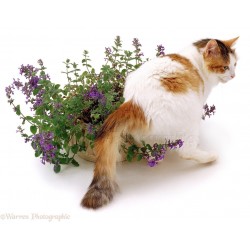
Семена кошачьей мяты...
Цена
1,95 €
SKU: MHS 88
Seeds Gallery Com,
5/
5
<!DOCTYPE html>
<html>
<head>
<meta http-equiv="Content-Type" content="text/html; charset=UTF-8" />
</head>
<body>
<h2><strong>Семена кошачьей мяты (Nepeta cataria)</strong></h2>
<h2><strong><span style="color: #ff0000;">Цена за пакет из 170+- (0,1 g) семян.</span></strong></h2>
<p>Синонимы: котовник голый, котовник кошачий, полевой бальзам, кошачья мята, кошачья трава, кошачья выпивка, котовник лимонный, котовник мятный, кошечник, шандра душистая, матошник, болячная трава</p>
<p>Свое название трава получила не случайно, а из-за необычного наркотического воздействия на кошек. В течение 10 минут животные впадают в неистовство, вылизывают и кусают растение, громко мурлычат и мотают головой, причем этот эффект распространяется даже на диких кошек. Раньше кошачью мяту использовали в качестве приманки для рысей, пум, леопардов и, даже, львов. Все дело в том, что в составе этой травы содержится до 3% эфирного масла, источающего приятный лимонный аромат. По мнению ученых, именно он и привлекает кошек. Людям этот аромат тоже по душе, поэтому кошачью мяту часто добавляют в качестве пряности в кондитерские изделия и десерты.</p>
<p>Кроме приятного запаха у этого растения есть масса других преимуществ. Его используют при проблемах с ЖКТ, кашле, стрессе, и некоторых кожных болезнях. Лекарственные препараты из кошачьей мяты улучшают аппетит, нормализуют сердцебиение и успокаивают. Также, их можно использовать как жаропонижающее или противопростудное средство. Из кошачьей мяты делают препараты наружного применения для лечения фурункулов, опухолей и кожных воспалений. В этом случае она выступает как антибиотик.</p>
<p>Кошачья мята распространено по всему миру. Растет на открытой местности: лесных полянах, пустырях, склонах и вдоль дорог. В России ее можно встретить в европейской части страны. По внешнему виду это невысокое многолетнее растение с крупными треугольными листьями и грязно-белыми маленькими цветочками с пурпурными и фиолетовыми крапинками на конце стебля.</p>
<p>На латыни: Nepeta cataria</p>
<p>Синонимы: котовник голый, котовник кошачий, полевой бальзам, кошачья мята, кошачья трава, кошачья выпивка, котовник лимонный, котовник мятный, кошечник, шандра душистая, матошник, болячная трава</p>
<p>Кошачью мяту используют при следующих недугах:<br />Бронхит<br />Анемия<br />Истирия<br />Невроз<br />Головная боль<br />Бессонница</p>
<p>Способы применения кошачьей мяты:</p>
<p>Общий: 1 столовую ложку кошачьей мяты залить 300 мл кипятка. Оставить на два часа в темном месте. После этого процедить. Готовый настой рекомендуется принимать по 1 ст. ложке 3 раза в день перед употреблением пищи. После первого приема пройдут головные боли и нервное возбуждение.</p>
<p>Обезбаливающий и расслабляющий отвар: Для отвара, кроме кошачьей мяты, потребуется валериана и шлемник байкальский. Возьмите по чайной ложке каждой травы, залейте двумя стаканами воды и вскипятите. Через 20 минут подогрейте, но не доводите до кипения. Выпить рекомендуется один стакан отвара. Если добавите сахар, то по вкусу будет похоже на чай с лимоном.</p>
<p>Отвар от бессонницы: Для отвара, кроме кошачьей мяты, потребуется корень валерианы, хмель, цветки ромашки, шлемник байкальский и пассифлора. Для начала смешайте по одной ст. ложке каждой травы. Три столовых ложки смеси залейте двумя стаканами воды и доведите до кипения. Кипятить пять минут. Потом выключите огонь, закройте крышкой и оставьте на один час. Готовый настой необходимо процедить. Принимать по половине стакана трижды в день после еды в течение месяца.</p>
<p>Лекарственным средством не является. Лучше проконсультироваться с лечащим врачом перед употреблением. Хранить не более двух лет при комнатной температуре в месте, лишенном посторонних запахов. Рекомендуемая влажность 60-70%.</p>
</body>
</html>
MHS 88


Variety from Thailand
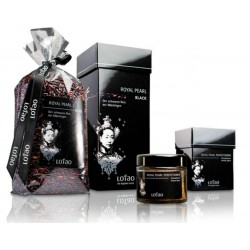
Black Rice Royal Pearl Seeds
Цена
1,95 €
SKU: VE 108 BR (1g)
Seeds Gallery Com,
5/
5
<h2><strong>Black Rice Royal Pearl Seeds</strong></h2>
<h2 class=""><span style="color: #ff0000;"><strong>Price for Package of 50 (1g) seeds.</strong></span></h2>
<p><span>Royal Pearl Rice is an aromatic rice with a nutty aroma. The delectable taste and smell of this rice is perfect for all types of dishes especially Asian and Thai cuisine.</span></p>
<p><span>Oryza sativa, commonly known as Asian rice, is the plant species most commonly referred to in English as rice. Oryza sativa is a grass with a genome consisting of 430Mb across 12 chromosomes. It is renowned for being easy to genetically modify, and is a model organism for cereal biology.</span></p>
<p><span>Debates on the origins of the domesticated rice are numerous. In 2011, genetic evidence showed that all forms of Asian rice, both indica and japonica, sprang from a single domestication that occurred 8,200–13,500 years ago in China of the wild rice Oryza rufipogon.[5] A 2012 study, through a map of rice genome variation, indicated that the domestication of rice occurred in the Pearl River valley region of China. From East Asia, rice was spread to South and Southeast Asia.[6] Before this research, the commonly accepted view, based on archaeological evidence, is that rice was first domesticated in the region of the Yangtze River valley in China.</span></p>
<p><span>The precise date of the first domestication is unknown, but depending on the molecular clock estimate, the date is estimated to be 8,200 to 13,500 years ago. This is consistent with known archaeological data on the subject.</span></p>
<p><span>An older theory, based on one chloroplast and two nuclear gene regions, Londo et al. (2006) had proposed that O. sativa rice was domesticated at least twice—indica in eastern India, Myanmar, and Thailand; and japonica in southern China and Vietnam—though they concede that archaeological and genetic evidence exist for a single domestication of rice in the lowlands of China.</span></p>
<p><span>Because the functional allele for nonshattering, the critical indicator of domestication in grains, as well as five other single-nucleotide polymorphisms, is identical in both indica and japonica, Vaughan et al. (2008) determined a single domestication event for O. sativa happened in the region of the Yangtze River valley.</span></p>
<p><span>In 2003, Korean archaeologists alleged they discovered burnt grains of domesticated rice in Soro-ri, Korea, which dated to 13,000 BC. These antedate the oldest grains in China, which were dated to 10,000 BC, and potentially challenge the mainstream explanation that domesticated rice originated in China. The findings were received by academia with strong skepticism.</span></p><script src="//cdn.public.n1ed.com/G3OMDFLT/widgets.js"></script>
VE 108 BR (1g)



Станьте нашим поставщиком...
Цена
0,00 €
SKU:
Seeds Gallery Com,
5/
5
<!DOCTYPE html>
<html>
<head>
<meta http-equiv="Content-Type" content="text/html; charset=UTF-8" />
</head>
<body>
<h2><strong>Станьте нашим поставщиком семян</strong></h2>
<h2><strong>Что нужно, чтобы стать нашим поставщиком семян?</strong></h2>
<p>Чтобы стать нашим поставщиком, вам необходимо иметь видео и фотографии плодов растений, которые вы нам предлагаете, с вашими личными данными и датой на бумаге, которые будут четко видны (с вашим именем и адресом электронной почты, которые вы используете для PayPal ).</p>
<p>Если это овощ (помидор, перец, огурец ...), вам нужно знать точное название сорта, потому что, если вы используете любое другое название, а мы не можем найти информацию в Интернете, то нас это не интересует. семена.</p>
<p>Вам нужно будет отправить нам меньшее количество семян (20), чтобы мы могли провести тест на прорастание семян. После этого мы можем организовать дальнейшую покупку семян у вас.</p>
<p>Мы НЕ ЗАИНТЕРЕСОВАНЫ в поставщиках из Китая, Индонезии ...</p>
<p>Мы осуществляем платежи исключительно через PayPal (другого способа оплаты нет).</p>
</body>
</html>





